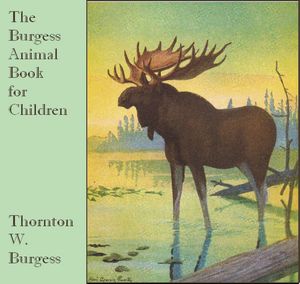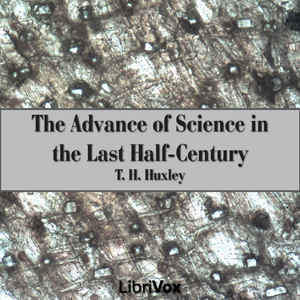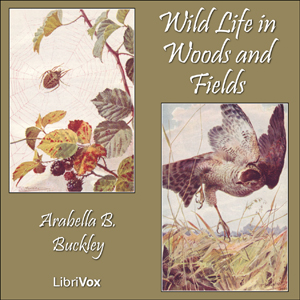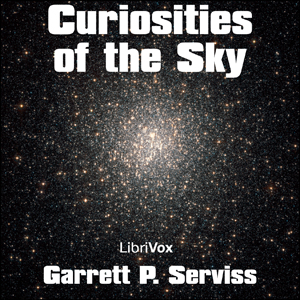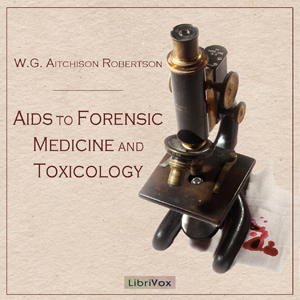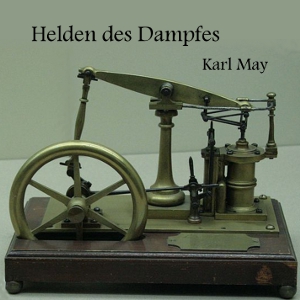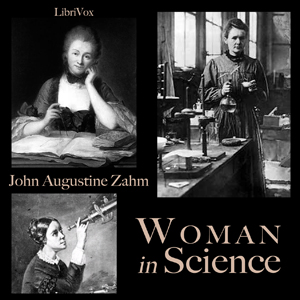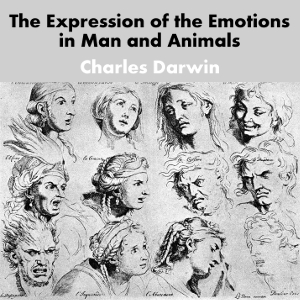The Book of the Damned was the first published nonfiction work of the author Charles Fort (first edition 1919). Dealing with various types of anomalous phenomena including UFOs, strange falls of both organic and inorganic materials from the sky, odd weather patterns, the possible existence of creatures generally held to be mythological, disappearances of people under strange circumstances, and many other phenomena, the book is historically considered to be the first written in the specific field of anomalistics. - Summary from Wikipedia
28 episodes
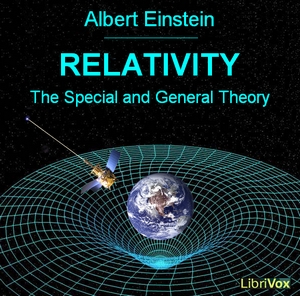
This is an introduction to Einstein’s space-bending, time-stretching theory of Relativity, written by the master himself. Special and General relativity explain the structure of space time and provide a theory of gravitation, respectively. Einstein’s theories shocked the world with their counterintuitive results, including the dissolution of absolute time. In this book he brings a simplified form of his profound understanding of the subject to the layperson. In the words of Einstein: “The present book is intended, as far as possible, to give an exact insight into the theory of Relativity to those readers who, from a general scientific and philosophical point of view, are interested in the theory, but who are not conversant with the mathematical apparatus of theoretical physics.” The book is challenging at times but, when approached patiently, proves itself one of the most lucid explanations of Relativity to be found anywhere. [Due to transcription or optical character recognition errors in creating online texts, and because of less-than-clear fonts in some printed texts, the variables as read in some of the equations here are not as Einstein intended. For example, the numeral ‘one’ has frequently been printed and read as the letter ‘I.’ In addition, some equations do not translate well into the spoken word. If you require completely accurate renditions of Einstein’s mathematical formulas, we suggest that you consult a published text.] — Summary written by Kelly Bescherer [and Laurie Anne Walden]
13 episodes
Peter Rabbit goes to school, with Mother Nature as his teacher. In this zoology book for children, Thornton W. Burgess describes the mammals of North America in the form of an entertaining story, including plenty of detail but omitting long scientific names. There is an emphasis on conservation. (Summary by Laurie Anne Walden)
41 episodes
Thomas H. Huxley, an English biologist and essayist, was an advocate of the theory of evolution and a self-proclaimed agnostic. A talented writer, his essays helped to popularize science in the 19th century, and he is credited with the quote, "Try to learn something about everything and everything about something." In The Advance of Science in the Last Half Century, he presents a summary of the major developments in Physics, Chemistry and Biology during the period 1839-1889 and their impact on society, within the historical context of philosophical thought and scientific inquiry going back to Aristotle. Huxley’s clear and readable prose makes this subject equally enjoyable for both the student of scientific history and the casual listener alike. (Summary by J. M. Smallheer)
4 episodes
The book, also known as Darwin's Journal of Researches, is a vivid and exciting travel memoir as well as a detailed scientific field journal covering biology, geology, and anthropology that demonstrates Darwin's keen powers of observation, written at a time when Western Europeans were still discovering and exploring much of the rest of the world. Although Darwin revisited some areas during the expedition, for clarity the chapters of the book are ordered by reference to places and locations rather than chronologically. With hindsight, ideas which Darwin would later develop into his theory of evolution by natural selection are hinted at in his notes and in the book (Summary from Wikipedia).
48 episodes
In 1907 Wallace wrote the short book Is Mars Habitable? to criticize the claims made by Percival Lowell that there were Martian canals built by intelligent beings. Wallace did months of research, consulted various experts, and produced his own scientific analysis of the martian climate and atmospheric conditions. Among other things Wallace pointed out that spectroscopic analysis had shown no signs of water vapour in the Martian atmosphere, that Lowell's analysis of Mars's climate was seriously flawed and badly overestimated the surface temperature, and that low atmospheric pressure would make liquid water, let alone a planet girding irrigation system, impossible. (from Wikipedia)
9 episodes
The Burgess Bird Book for Children is a zoology book written in the form of a story featuring Peter Rabbit. Peter learns from his friend Jenny Wren all about the birds of North America, and we meet many of them in the Old Orchard, the Green Meadow, and the Green Forest. (summary by Laurie Anne Walden)
46 episodes
The experiments herewith reported were undertaken with the view of introducing certain improvements into the oil-drop method of determining e and N and thus obtaining a higher accuracy than had before been possible in the evaluation of these most fundamental constants.Physical Review, Vol. II, No. 2
3 episodes
Wild Life in Woods and Fields by Arabella B. Buckley is a collection of stories that will encourage children to become little naturalists and explore the majesty of the great outdoors. This is science taught in such a charming, delightful way that children will learn without even realizing it! (Summary by Laura Caldwell)
13 episodes
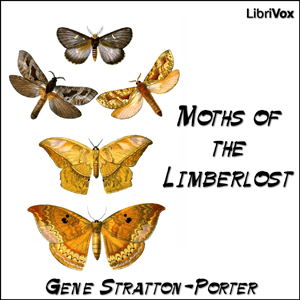
Gene Stratton-Porter (August 17, 1863 - December 6, 1924) was an American author, amateur naturalist, wildlife photographer, specializing in the birds and moths in one of the last of the vanishing wetlands of the lower Great Lakes Basin. The Limberlost and Wildflower Woods of northeastern Indiana were the laboratory and inspiration for her stories, novels, essays, photography, and movies. She was an accomplished author, artist and photographer and is generally considered to be one of the first female authors to promulgate public positions; conserving the Limberlost Swamp in her case. Although Stratton-Porter wanted to focus on nature books, it was her romantic novels that made her famous and generated the finances that allowed her to pursue her nature studies. In Moths of the Limberlost, she shares her lifelong love of the moths she describes through a series of charming anecdotes and wonderfully descriptive passages, providing vivid detail of each stage of their life cycles. (Summary adapted from wikipedia and expanded by J. M. Smallheer)
15 episodes
56 flavors of Pi proudly produced by LibriVox volunteers to celebrate Pi Day, 2008. (3/14) Don't worry, you don't have to listen to an infinite string of numbers: each reader presents just the first 50 digits in styles of their own choosing.In light of the spirit of this occasion (and the might of our spirited community), this LibriVox offering makes a gentle exception to the policy of faithfully presenting just the text. This is the real Pi, but served up with a side of sillies -- it's Pi a la volunteer. (Summary by Cori Samuel and Anita Roy Dobbs)
56 episodes
Astronomy is known as the oldest of the sciences, and it will be the longest-lived because it will always have arcana that have not been penetrated."-Excerpt from the Preface of Curiosities of the Sky by Garrett Serviss
15 episodes
This is a concise yet thorough explanation of what might happen to our world in the aftermath of a nuclear war. The myriad of potential effects will be global and wide-spread. (Summary by Allyson Hester)
3 episodes
Mutual Aid: A Factor of Evolution is a book by Peter Kropotkin on the subject of mutual aid, written while he was living in exile in England. It was first published by William Heinemann in London in October 1902. The individual chapters had originally been published in 1890-96 as a series of essays in the British monthly literary magazine, Nineteenth Century.
Written partly in response to Social Darwinism and in particular to Thomas H. Huxley's Nineteenth Century essay, "The Struggle for Existence," Kropotkin's book drew on his experiences in scientific expeditions in Siberia to illustrate the phenomenon of cooperation. After examining the evidence of cooperation in nonhuman animals, "savages," "barbarians," in medieval cities, and in modern times, he concludes that cooperation and mutual aid are as important in the evolution of the species as competition and mutual strife, if not more so. (Summary by Wikipedia)
12 episodes
This is the official report, published nearly 11 months after the first and only atomic bombings in history (to date), of a group of military physicians and engineers who accompanied the initial contingent of U.S. soldiers into the destroyed cities of Hiroshima and Nagasaki. The report presents a clinical description of the devastation, loss of life and continued suffering of the survivors that resulted from the world's first and only atomic bombings, to date. The appendix is an eyewitness account, contrasting vividly with the dispassionate sang-froid of the report itself, written by a German Jesuit priest who survived the blast at Hiroshima, and whose order assisted in rescue efforts following the catastrophic attack. This recording was completed on the 63rd anniversary of the events. (Summary by Dennis Sayers).
8 episodes
A 1922 source-book for British criminal pathologists, this will be of particular interest to fans of popular police forensics television shows, films, and murder mysteries.(Summary by BellonaTimes)
19 episodes
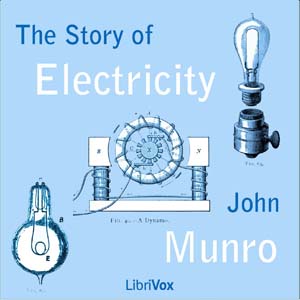
In the book's preface, the author writes: "Let anyone stop to consider how he individually would be affected if all electrical service were suddenly to cease, and he cannot fail to appreciate the claims of electricity to attentive study."In these days when we take for granted all kinds of technology - communications, entertainment, medical, military, industrial and domestic - it is interesting to learn what progress had been made in the fields of electricity and technology by the beginning of the 20th century.Including the dawn of hydro-electric power, the x-ray, the phonograph, the telephone and the wireless telegraph, this book explains the pioneering work of the men who made our modern world possible, and sets us wondering what the next century may bring - providing that we do not manage to destroy our planet in the meantime. The Gutenberg text of the 1915 edition (as recorded) does not have the benefit of the book's many diagrams. Also available, however, is an online book scan of the 1912 edition which includes the illustrations and coincides largely with the text recorded. (Summary by Ruth Golding)
13 episodes
A Handbook for Women During Pregnancy. This book, written for women who have no special knowledge of medicine, aims to answer the questions which occur to them in the course of pregnancy. Directions for safeguarding their health have been given in detail, and emphasis has been placed upon such measures as may serve to prevent serious complications.
(Introduction by J. Morris Slemons)
17 episodes
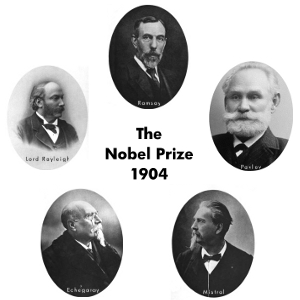
The Nobel Prizes are international awards bestowed once a year by Scandinavian committees for cultural and scientific advances. They were established in 1895 by the Swedish chemist Alfred Nobel, the inventor of dynamite. The prizes in Physics, Chemistry, Physiology or Medicine, Literature, and Peace were first awarded in 1901.
The Laureats of 1904 were:
in Physics: Lord Rayleigh (John William Strutt, 1842 - 1919), "for his investigations of the densities of the most important gases and for his discovery of argon in connection with these studies";
in Chemistry: Sir William Ramsay (1852 - 1916), "for his discovery of the inert gaseous elements in air, and his determination of their place in the periodic system";
in Physiology or Medicine: Ivan Petrovich Pawlow (1849 - 1936), "in recognition of his work on the physiology of digestion, through which knowledge on vital aspects of the subject has been transformed and enlarged";
in Literature: Frédéric Mistral (one half, 1830 - 1914), "in recognition of the fresh originality and true inspiration of his poetic production, which faithfully reflects the natural scenery and native spirit of his people, and, in addition, his significant work as a Provençal philologist",
and José Echegaray y Eizaguirre (one half, 1832 - 1916), "in recognition of the numerous and brilliant compositions which, in an individual and original manner, have revived the great traditions of the Spanish drama";
in Peace: Institut de droit international (Institute of International Law), "for its efforts as an unofficial body to formulate the general principles of the science of international law.".
This multilingual collection contains the presentation speeches for the Laureats, their biographies, as well as the famous "Nobel lectures" for the three scientific awards. The presentation speeches, originally given in Swedish, were translated by the Nobel Foundation into the mother tongue of the Laureats. (Summary by Availle and Wikipedia)
15 episodes
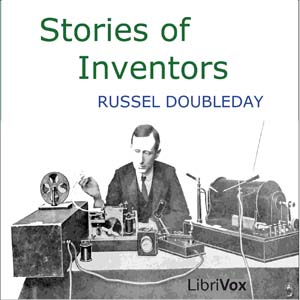
Doubleday chronicles the history of everyday inventions that form the foundation of technology now common through the world. While some of the inventions are no longer used, each example shows how inventors contributed to technology through perseverance, inspiration and clever observations. In each chapter, he gives a clear, understandable background of the technology.Many of the now outdated inventions may have inspired later inventions by meeting emerging demands. For example, Edison's filament bulb is now being phased out by more efficient CFL's, but Edison's contribution to indoor lighting likewise removed the need for inefficient gas-burning lamps. While trains for carrying mail and freight have largely been replaced by more nimble semi trailers, one example shows how technology can translate from ground to air travel. Trains with curved pipes that scooped water to refill reservoirs could be controlled from the train engine-cab without stopping, and mirrors the in-flight refueling systems that keep aircraft flying without the need to land. Although computers have replaced typewriters, word processing programs and web browsers justify text with similar algorithms. (Summary By LivelyHive)
13 episodes
Der dreiteilige Aufsatz über Die Helden des Dampfes wurde mit hoher Wahrscheinlichkeit von Karl May verfaßt und veröffentlicht in Schacht und Hütte. Blätter zur Unterhaltung und Belehrung für Berg- Hütten- und Maschinenarbeiter. (Dresden 1875). Eine Zeitschrift, die 1875/76 etwa ein Jahr lang von Karl May als Redakteur konzipiert und betreut wurde und im Verlag H. G. Münchmeyer erschien.
Der Aufsatz erschien im 1. Jahrgang aufgeteilt auf die Nummern 2, 4 und 7. Bereits in der Nummer 1 erschien zudem ein Aufsatz mit dem Titel Mit Dampf um den Erdball, welcher hier als Anhang mit aufgenommen wurde. (Zusammenfassung von Karl-May-Wiki und Wassermann)
4 episodes
Did you ever wish you knew how to explain natural phenomena such as earthquakes and volcanoes to your children? Search no more, this book has all the answers (at least all the ones that were known in 1869) and gives them in a pedagogical way. Listed on the Ambleside homeschooling list. (Summary by Nadine)
16 episodes
This work from 1901 predicts what technological developments will manifest in the twentieth century. The author, a technical journalist, presents ideas for inventions and new developments in the areas of power, transportation, agriculture, mining, domestic applications, electronic devices, warfare, music, art, and news. Many have come to pass. All of them provide an interesting look into how the next century was imagined and what challenges were anticipated for the progress of society. -(Summary by A. Gramour)
15 episodes
A history of woman's role in science through the ages and the many contributions she has made. (summary by Guero)
27 episodes

Fortress-walled Saint Catherine's monastery on the Sinai peninsula has been a pilgrimage site since its founding by the Byzantine Emperor Justinian in the 6th century. According to tradition, the monastery sits at the base of the mountain where Moses received the Tablets of the Law. Set in rugged country, accessible in times past only by a many days journey by camel across barren desert, the monastery survived intact through the centuries, and, as a result, became a rich repository of religious history—told through its icons, mosaics, and the books and manuscripts in the monastery library.
Our Journey to Sinai by Agnes Bensly is the story of a visit to Saint Catherine's by a group of British scholars in the 1890's, who were drawn there in quest of manuscripts from early Christian times. The group had one particular prize in their sights. It was a second century translation of the Gospels from Greek into an Aramaic dialect called Syriac. This was a rare find indeed. One of the group, Agnes Smith Lewis, an accomplished linguist, had been to the monastery once before. On that visit, she had spotted a “palimpsest of most venerable appearance,” a palimpsest being a parchment (leather) paged book, which had been used to write on at two different times, the first set of writing having been partially scraped off the parchment before it was reused. Agnes Smith Lewis had recognized the hidden underwriting in this book to be in Syriac, “the native language of Our Lord and His disciples.” And now, the excited group had decided to revisit Saint Catherine's, in hopes of copying and reading the ancient text. Their trip is vividly described by Agnes Bensly --bustling Cairo; a tent and camel crossing of the desert with Bedouin guides; the monks and monastery life; a breathtaking climb up 3000 stone steps to the top of Mount Sinai, and what they found in the mysterious manuscript they had come so far to see.
Our Journey to Sinai, while providing a glimpse into the complexities of Bible scholarship, is also a wonderful travel book and an intimate portrait of Saint Catherine's monastery—a monastery which is, today, a World Heritage Site. (Introduction by Sue Anderson)
10 episodes
The Chemical History of a Candle is a series of 6 lectures on chemistry presented to a juvenile audience in 1848. Taught by Michael Faraday - a chemist and physist, and regarded as the best experimentalist in the history of science - it is probably the most famous of the Christmas Lectures of the Royal Society.
Taking the everyday burning of a candle as a starting point, Faraday spans the arc from combustion and its products, via the components of water and air (oxygen, hydrogen, nitrogen, carbon), back to the type of combustion that happens in the human body when we breathe.
The final lecture "On Platinum" describes a then new method to produce large quantities of Platinum. It was delivered before the Royal Institution on February 22, 1861. (Summary by Availle.)
8 episodes
Elisha Gray was an American electrical engineer who co-founded the Western Electric Manufacturing Company. Gray is best known for his development of a telephone prototype in 1876 in Highland Park, Illinois and is considered by some writers to be the true inventor of the variable resistance telephone, despite losing out to Alexander Graham Bell for the telephone patent.Nature's Miracles: Familiar Talks on Science, published in 1900, is a discussion of science and technology for the general public. Volume II is subtitled Energy and Vibration: Energy, Sound, Heat, Light, Explosives. (Summary from Wikipedia)
32 episodes
Do you know the difference between sedimentary, igneous and metamorphic rocks? Are you interested in their geologic origin, chemical composition or how each type affects the landscape? Do you know the differences between limestone, granite and marble as building materials? You will find these and lots of other interesting facts about rocks in this second edition of "Rocks and Their Origins" published in 1922. The author, Grenville A. J. Cole, was an English geologist, Professor of Geology in the Royal College of Science for Ireland and an avid cyclist. (summary by J. M. Smallheer)
15 episodes
"While many scientific men now understand our place in the universe, we electrons are anxious that every person should know the very important part which we play in the workaday world. It was for this reason that my fellow-electrons urged me to write my own biography. I am pleased to say that my relationship with the scribe who has put down my story in the following pages has been of the most friendly description. I have allowed him to place what he calls "The Scribe's Note" at the beginning of each chapter, but it will be understood clearly that these are merely convenient embellishments, and that I am responsible for the story of my own experiences." (Introduction adapted from the text)
22 episodes
National Geographic Magazine Volume 1 Number 2 published in 1889. Topics of articles are:
Africa, its Past and Future
Reports on:
Geography of the Land
Geography of the Sea
Geography of the Air
Geography of Life
(Summary by Guero)
8 episodes
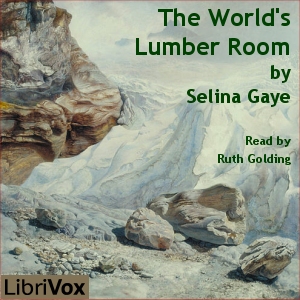
If this book were written today, it would be called "The Story of the World's Rubbish".That may not sound a promising subject for a book, but we are taken on a journey all over the world (and beyond) to explain the many varieties of dust and refuse - animal, vegetable and mineral - how it is made both by man and by nature, what happens to it, and why we need it. We find that recycling is nothing new: man has been doing it for centuries, and nature has been doing it for billions of years. As every schoolboy knows, 'matter is neither created nor destroyed', so it stands to reason that every particle of it must be somewhere.This study of our knowledge of the earth was written for the layman before most of the -ologies were even a twinkle in a professor's eye. Geology, meteorology, hydrology, biology, glaciology and even sociology and anthropology all have their place in this readable and enjoyable tour of the earth's 'lumber room'.Though some of the science is out of date - it was written, for instance, 80 years before the theory of plate tectonics was understood - the author admits candidly when the science of the day does not yet provide answers to some questions. The almost contemporary description of the eruption of Krakatoa still resonates with us - compare the effect on our modern world of Mount St. Helens and Eyjafjallajökull in recent decades.Miss Gaye shows that far from everything in nature's lumber room being rubbish, every speck of dust has a purpose. The dust-cart (garbage truck) will never look the same to you again. (Summary by Ruth Golding)
19 episodes
The Elements of Ornithology is one of seven in a Series of First Books of Natural History Prepared for the Use of Schools and Colleges. This succinct little textbook from 1845 presents an introduction to ornithology. The information, albeit not current, is still interesting and of use as a general overview of bird biology and classification. The author was a surgeon in the U.S. Navy and president of the Academy of Natural Sciences. (Summary by A. Gramour)
12 episodes
Late nineteenth-century naturalist William J. Long invites us in to the secret worlds of the woodland animals. Containing Long's own animal observations along with stories related to him by other humans who inhabit the woods, these stories give us an insight into the behavior of wild animals as they go about their lives in their own secret places deep in the forests of eastern North America. Although Long was accused in his day of anthropomorphizing the animals he wrote about, readers who are familiar with any of the animals he writes of will have glimpses of recognition at behaviors they have seen for themselves and explore the deeper meanings these actions have in that animal's life. The stories will paint pictures in your imagination that will stay with you long after the book has ended. (Summary by Jill Engle.)
18 episodes
Probably no other American writer has a greater sympathy with, and a keener enjoyment of, country life in all its phases—farming, camping, fishing, walking—than has John Burroughs. His books are redolent of the soil, and have such "freshness and primal sweetness," that we need not be told that the pleasure he gets from his walks and excursions is by no means over when he steps inside his doors again. As he tells us on more than one occasion, he finds he can get much more out of his outdoor experiences by thinking them over, and writing them out afterwards. These essays are delightful stories about birds, bees, foxes, hounds, fruit (the apple), trees, squirrles and nature in general written by a man who loves watching them and writing about them. - Summary by The introduction and Phil Chenevert
12 episodes
The clearness, simpicity, and charm of the great French naturalist's style are nowhere better illustrated than in this work, which in its variety of subject-matter and apt use of entertaining anecdote rivals "The Story-Book of Science," already a favorite with his readers. Such instances of antiquated usage or superseded methods as occur in these chapters of popular science easily win our indulgence because of the literary charm and warm human quality investing all that the author has to say. -- Translator (Introductory Note).
23 episodes

"The present volume is chiefly intended for those of my young friends who have read, and been interested in, The Fairyland of Science. It travels over a wide field, pointing out a few of the marvellous facts which can be studied and enjoyed by the help of optical instruments. It will be seen at a glance that any one of the subjects dealt with might be made the study of a lifetime, and that the little information given in each lecture is only enough to make the reader long for more.In these days, when moderate-priced instruments and good books and lectures are so easily accessible, I hope some eager minds may be thus led to take up one of the branches of science opened out to us by magic glasses; while those who go no further will at least understand something of the hitherto unseen world which is now being studied by their help.The two last lectures wander away from this path, and yet form a natural conclusion to the Magician's lectures to his young Devonshire lads." Arabella B. Buckley
13 episodes
The Expression of the Emotions in Man and Animals is a book by Charles Darwin, published in 1872, concerning genetically determined aspects of behaviour. It was published thirteen years after On the Origin of Species and alongside his 1871 book The Descent of Man, it is Darwin's main consideration of human origins. In this book, Darwin seeks to trace the animal origins of human characteristics, such as the pursing of the lips in concentration and the tightening of the muscles around the eyes in anger and efforts of memory. Darwin sought out the opinions of some eminent British psychiatrists, notably James Crichton-Browne, in the preparation of the book which forms Darwin's main contribution to psychology. - Summary by Availle
27 episodes
In the 18th and early 19th centuries, it was common for discoveries in branches of science such as botany, astronomy and medicine to be described in book-length treatises in verse. By the end of the 19th century this mode of popularising science was falling from favour as the studies of science and the humanities diverged and study became more specialised.This small selection of somewhat lighter-hearted verse written by distinguished scientists and mathematicians of the day includes poems by James Clerk Maxwell, William J. Macquorn Rankine and James Joseph Sylvester. (Summary by Ruth Golding)
13 episodes
Elements of Geology is one in a Series of First Books of Natural History Prepared for the Use of Schools and Colleges. This succinct little textbook from 1846 presents an introduction to geology. The information, albeit not current, is still interesting and of use as a general overview of the subject as well as interesting look into the period. Please note that some of the information has changed considerably since this time. The author was a surgeon in the U.S. Navy and president of the Academy of Natural Sciences. - Summary by Amy Gramour
22 episodes
Gertrude Chandler Warner, known mainly for her "Boxcar Children" series of mystery books, published this small book of Astronomy, Constellations, and the stories behind them in 1918. It follows the story of a little girl named Helen, and her friend Dr. Lorry as she learns about stars through stories, games, and more. (Summary by Kangaroo)
17 episodes
Lessons and exercises for young children, exploring map and compass, mountains and rivers, trees and flowers, wind and rain, and more. (Summary by Sarah Jennings)
46 episodes
Auguste Comte was from France and published this book in French in 1844. He made a very great impact on the sciences and claims to have “discovered the principal laws of Sociology." Comte says Reason has become habituated to revolt but that doesn’t mean it will always retain its revolutionary character. He discusses Science, the trade-unions, Proletariat workers, Communists, Capitalists, Republicans, the role of woman in society, the elevation of Social Feeling over Self-love, and the Catholic Church in this book. His goal is to replace theology with philosophy and develop the Religion of Humanity where Imagination is subordinate to Reason as Reason is to Feeling. Positivism can be summed up in this statements from his conclusion: “Love, then, is our principle; Order our basis; and Progress our end.” This is the 1908 edition of the book. - Summary by Craig Campbell
33 episodes

In preparing these Essays, my chief object has been to present scientific truths in a light and readable form—clearly and simply, but with an exact adherence to the facts as I see them. I have followed—here and always—the rule of trying to explain my meaning precisely as I should wish others to explain, to myself, matters with which I was unfamiliar. Hence I have avoided that excessive simplicity which some seem to consider absolutely essential in scientific essays intended for general perusal, but which is often even more perplexing than a too technical style. The chief rule I have followed, in order to make my descriptions clear, has been to endeavour to make each sentence bear one meaning, and one only. Speaking as a reader, and especially as a reader of scientific books, I venture to express an earnest wish that this simple rule were never infringed, even to meet the requirements of style.It will hardly be necessary to mention that several of the shorter Essays are rather intended to amuse than to instruct. - Summary by the Preface
31 episodes
Henry asks his sister Mary about the sky. She tells him all about the Sun, the Planets, the Moon, Comets and Meteors, and Stars. Mary tells her brother about mythologies people believed about the earth and sky along with true scientific information. (Summary by pjcsaville)
11 episodes
A biographical summary of the pre-eminent men of Britain grouped by profession. The extensive survey draws from information including college graduation, reputation during career, fellowships, and even known relatives. Includes discussions on findings and observations as well as referenced appendices. - Summary by Leon Harvey
24 episodes
This book tells the stories of some of the baby mammals of the wilderness,—how they grow and learn day by day to take care of themselves. In hollow trees or down under water among the lily leaves, in the cool sea or on the rugged mountains, on the grassy plains or among the waving tree-tops, in the dark caves and burrows or hidden in the tangles underfoot,—all the world is alive with young creatures. - Summary by introduction
13 episodes
Water: essential for life and in much of the world, we take it for granted. In this work, Jean Thompson explains various aspects of the water cycle in simple terms, for the benefit of young readers with enquiring minds. Listeners are referred to the text for the microphotographs described.
6 episodes
An accessible, comprehensive summary of the science and art of forestry, from its ancient roots to its 20th century techniques (many of which are still used today). This book synthesizes forestry efforts and practices from around the globe, providing the reader with unique lens into the sociocultural, historic and, of course, economic processes of nearly every world region. (Summary by jvanstan)
34 episodes
This book is composed of selections from Alexander Teixeira de Mattos’ Translation of Fabre’s “Souvenirs Entomologiques,” retold for children. It's made up of first-person narratives, and using his exceptional observation skills, gives us a close-up peep into the world of insects, including bees, wasps, worms, beetles, moths, and spiders, to name a few. When Fabre first published this work, as the Preface indicates, he was criticized by some scientists in his field for writing a scientific book that was "too interesting." - Summary by Devorah Allen
26 episodes
Francis Galton, credited with the discovery of identification by fingerprinting, also took a long term interest in the study of biometrics. In this book, many different faculties, both observable and measurable are discussed in length and methods of collecting data suggested. In addition, casual observations from personal memoirs, and drawing similar cases from other reputable sources are also compared. A wide variety of topics are mentioned, including differences in appearance within family members, to subtle habits and emotional responses comparing humans and animals are mentioned in a series of chapter length essays. - Summary by Leon Harvey
14 episodes


